The Important Symbols of Judaism and Their Meanings
Let’s explore symbols that are commonly identified as Jewish and examine their history and significance with these pictures of Jewish symbols and their meanings. Some of these symbols for Judaism are deeply rooted in religious practice while others are more cultural and spiritual.
Judaism Symbols:
Menorah
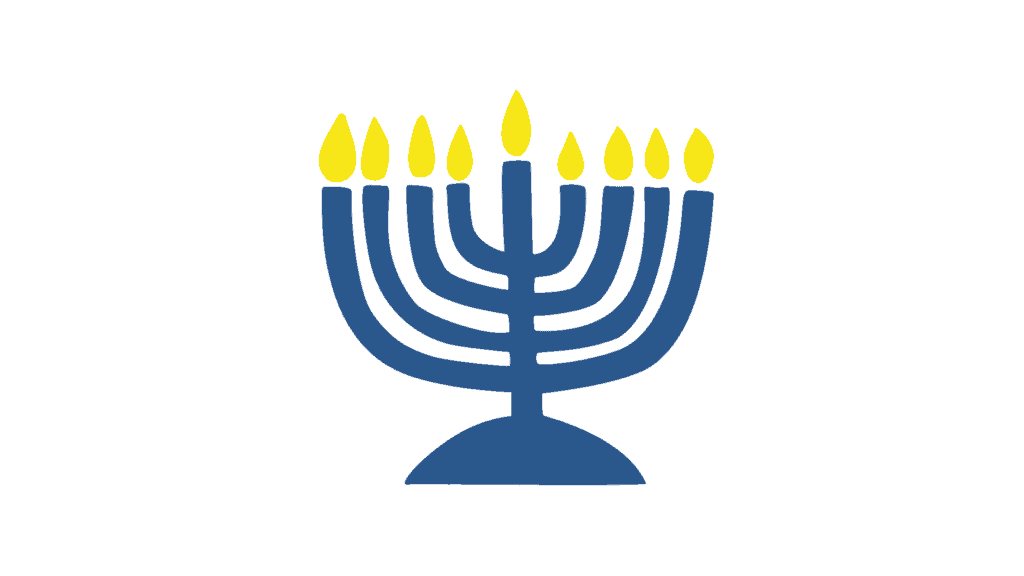
One of the most familiar symbols of Judaism, the menorah is a seven-armed candelabra that represents the state of Israel as a “light upon nations.” Interestingly, the menorah that is used to celebrate Hanukkah has nine arms instead of seven so we can light a candle for each night of the festival. Technically speaking, a menorah for Hanukkah is a “Hanukkiah,” but most everyone just calls it a menorah.
Dreidel

We spin the dreidel – a 4-sided spinning top – during the festival of Hanukkah. Each side of the dreidel has a Hebrew letter written which represents the first letters of a Hebrew phrase, Nes Gadol Haya Sham (Poh) or “A Great Miracle Happened There (Here).” We play a dreidel game on Hanukkah because there is a legend that before the Maccabees defeated King Antiochus and the Greek armies, the regime outlawed the study of Torah. But, the Jews defied the decree and studied Torah in secret. If one of the Greek officials passed by, Jewish children would quickly put away their books and pull out a toy, the spinning top, and pretend to play games.
Read More: How to Play Dreidel
Torah
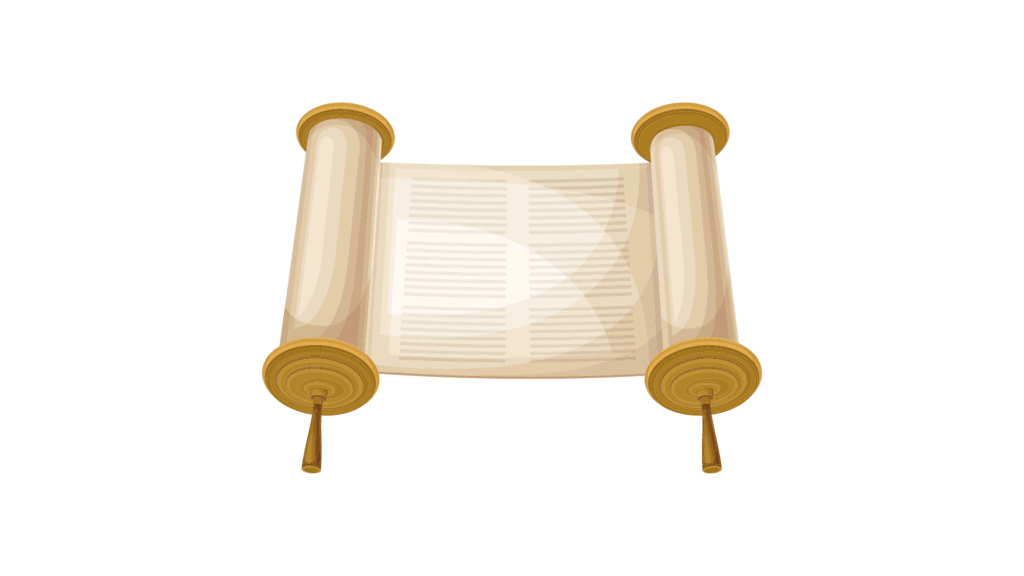
Judaism is based on the Hebrew bible called the Torah, or the five books of Moses which are Genesis, Exodus, Leviticus, Numbers and Deuteronomy. The word “Torah” means instruction or law and rabbinic teachings say that the Torah was given to Moses at Mount Sinai to share with the Jewish people. One of the holiest items in Judaism, the actual scroll is written by a Torah scribe on special parchment paper and housed in a holy cabinet called an ark. Congregations in all denominations of Judaism read the Torah on a weekly basis as part of Shabbat services and other festivals.
Tallit

This four-cornered prayer shawl is worn around one’s shoulders while reciting prayers. The Torah commands Jews to fulfill a mitzvah by wearing tzitzit, which are the knotted fringes on the corners of the tallit. The fringes are a reminder to remember and follow God’s commandments. There is a blessing for the Tallit that you recite before putting on the shawl. In some Jewish communities, a tallit is not worn until one’s Bar/Bat Mitzvah while in others, it is not worn until marriage.
Read More: Learn the Tallit Blessing
Kippah/Yarmulke
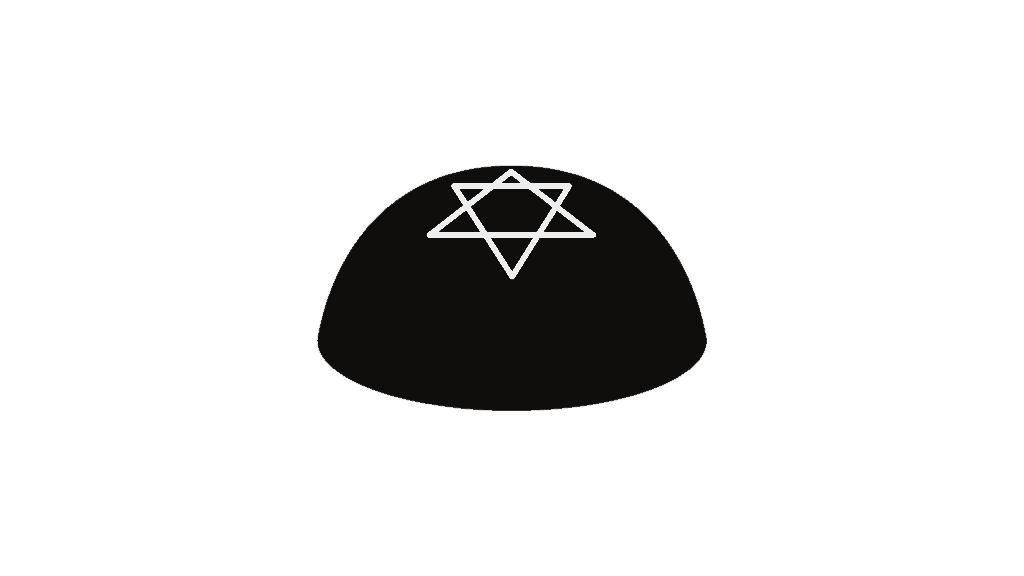
The small, round head covering worn by Jews is called a Yarmulke in Yiddish, or a Kippah in Hebrew. It serves as a reminder that there is always someone above you. Orthodox males generally wear a Kippah at all times, while Reform and Conservative Jews mostly wear them at religious services. The custom of a head covering is now commonplace among women in the less fundamentalist denominations. Many Bar and Bat Mitzvah ceremonies include a personalized Kippah as a gift to wear during the service.
Siddur
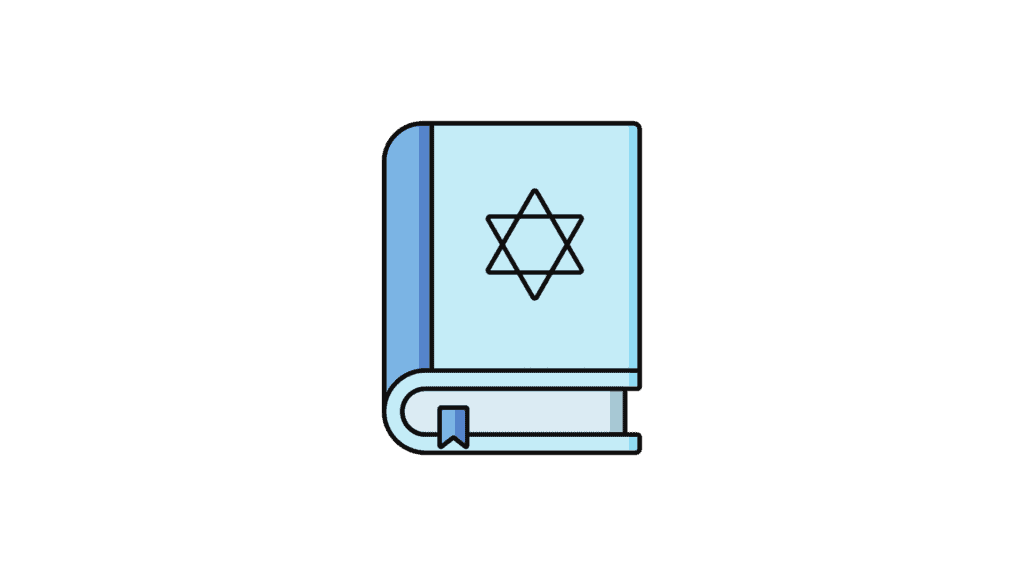
The Jewish prayer book, is a compilation of the Jewish liturgy. Siddur means order in Hebrew and includes fixed texts and structures of prayer from the Torah and from Nevi’im (Prophets). Various prayers have been added to the siddur over time. Depending on the version, the siddur might have prayers for weekday services, while others might include both Shabbat and weekday liturgy. Some might contain the prayers for weekdays, Shabbat, and for the three major festivals: Sukkot, Passover, and Shavuot. Different denominations of Judaism have developed their own prayer books.
Mezuzah
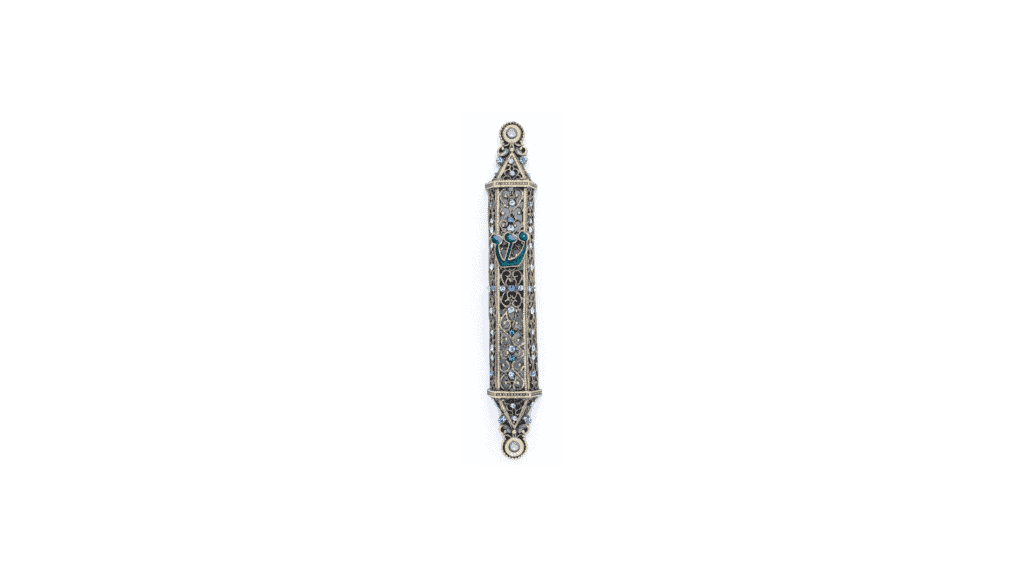
The small little cases you see on the doorposts of Jewish homes is called a mezuzah, and is based upon a teaching in Deuteronomy that commands us to keep G-d’s words in our minds and hearts by writing them on the doorposts of our homes. The mezuzah contains a rolled up piece of parchment with the words of the Shema, and the mezuzah itself usually has the letter Shin on the exterior. They are hung at an angle and are considered holy items.
Yad
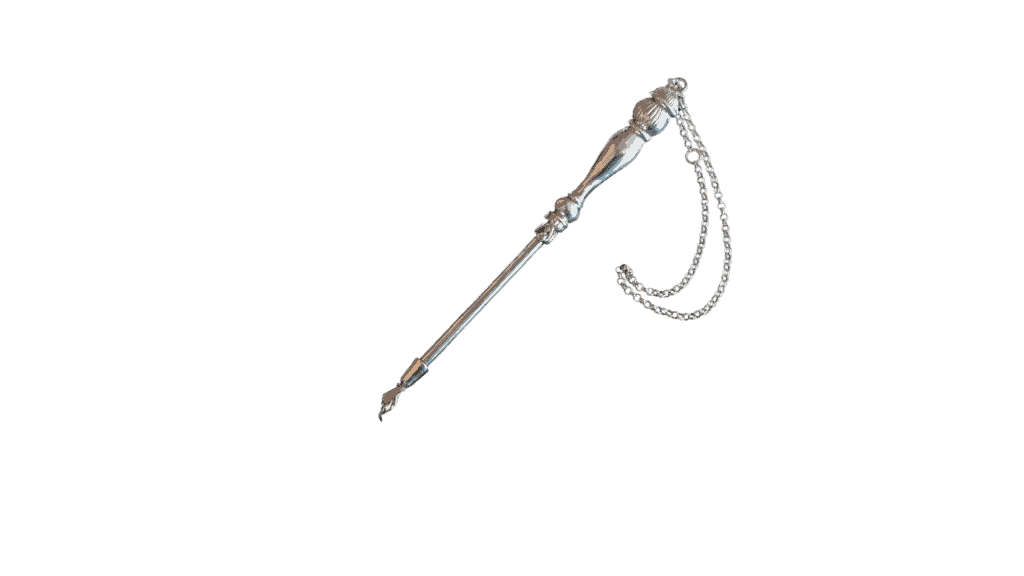
This decorative pointer is used by the Torah reader to follow along in the text during the reading of the Torah. It is in the shape of a hand because yad means hand in Hebrew. Not only does the yad keep the Torah reader’s place, but it also prevents the reader from touching the Torah parchment.
Challah
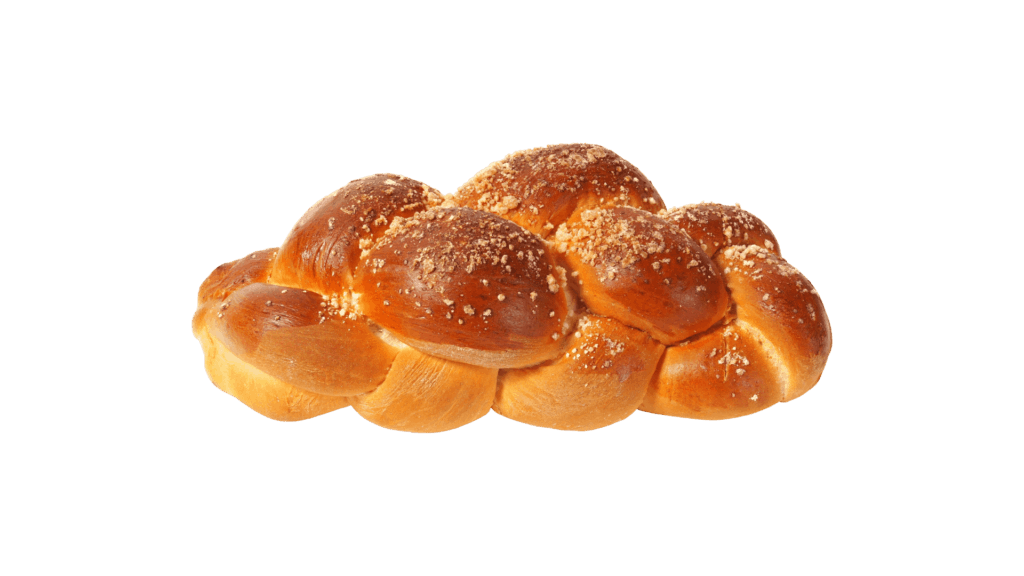
The golden brown twisted loaf of Jewish bread known as a challah dates back to when the Jewish people left Egypt and wandered in the desert for 40 years; the Torah says that during their journey a bread-like substance called manna fell from the heavens. In today’s Jewish home, challah is a yeast-risen sweet bread made from eggs that is braided into various shapes, with some bakers adding in raisins or chocolate chips. While a delicious treat, a challah also has various religious meanings with some loaves of challah featuring 12 braided bumps that symbolize the 12 tribes of Israel. A round challah is served on Rosh Hashanah to represent the circle of life that the new year brings in.
Pomegranate

The luscious fruit of a pomegranate is one of Israel’s seven species and symbolizes love and fertility in the Jewish tradition. A pomegranate is frequently mentioned in the Song of Songs; further, the seeds of the pomegranates symbolize the 613 mitzvot or commandments because there is speculation that there are 613 seeds in a pomegranate. Many families serve pomegranates on Rosh Hashanah in hopes of a new year filled with prosperity and blessing.
Shofar

A shofar is a ram’s horn that is blown in synagogue during the High Holy Days of Rosh Hashanah and Yom Kippur, as well as during the month of Elul leading up to the holy days. Many Jews believe it is a mitzvah, or a commandment, to hear the blasting sound of the shofar during the festival season. Traditionally, there are three types of blasts, called the tekiah, shevarim and the teruah. The shofar comes in many shapes and sizes so it may be blown by kids and adults.
Kiddush Cup
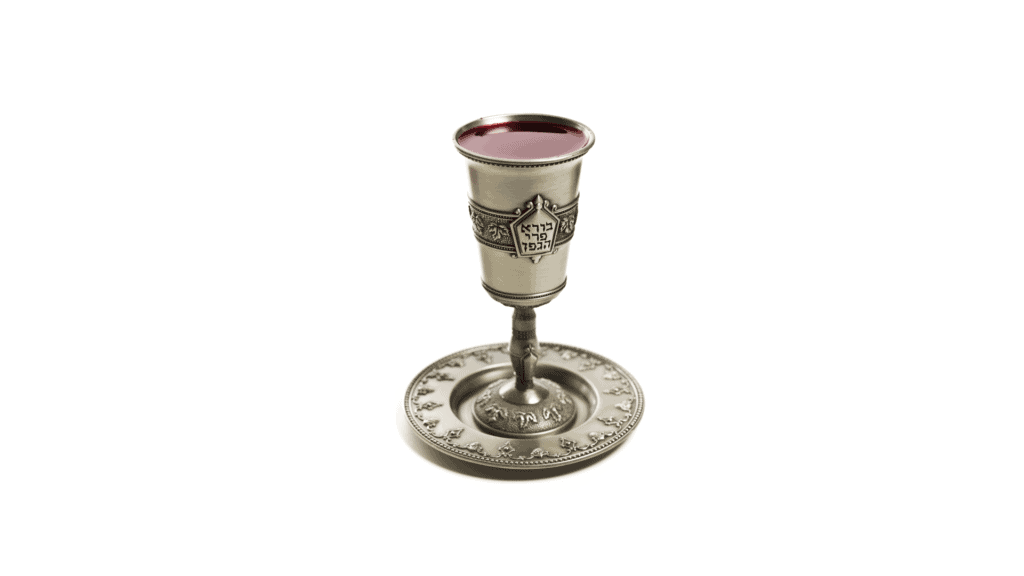
A silver goblet holding wine or grape juice is one of the most ubiquitous symbols of Judaism. Kiddush means “sanctification” and whether it is for a Shabbat table or part of the Passover seder, a blessing over the fruit of the vine is an essential element of the holiest moments of Judaism. After the festival candles are lit, the Kiddush cup is raised and the blessing over the wine is recited. At Havdalah, the closing ceremony for Shabbat, it is customary to fill the Kiddush cup until it is overflowing to represent the abundance of blessings we hope for in the coming week. This important ritual object is often presented to a Bar or Bat Mitzvah as a gift from their synagogue community.
Tefillin
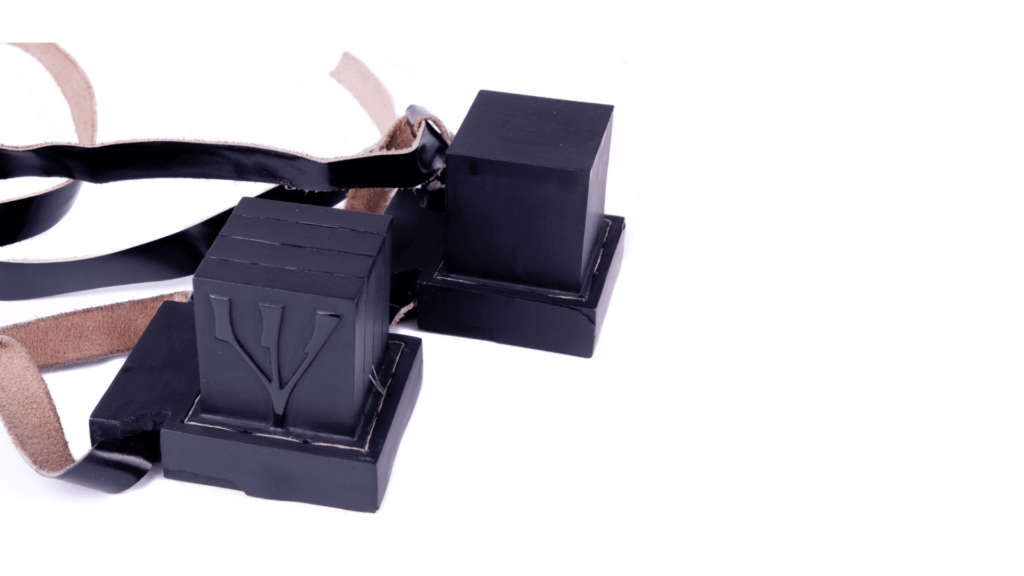
Two small black leather boxes are bound on one’s forehead and just above one’s bicep. While the word tefillin is not explicitly mentioned in the Torah, the practice of putting God’s words as a sign upon your arm and between your eyes is laid out in the Torah on four different occasions: twice when recalling the Exodus from Egypt and twice in the Shema prayer passages. Black leather straps are used to secure the tefillin to the arm and head. It is custom to lay tefillin during the weekday morning prayers to fulfill the commandment.
Chai

The word “life” in Hebrew is Chai -usually pronounced like the English word “hi” or “high – and the two Hebrew letters that make up the word Chai are CHET ( ח ) and YUD ( י ) . You’ll often see both Jewish men and women wearing the word as a necklace around their neck. The term, L’chaim, which means “to life” is also a phrase commonly used to toast a celebratory moment or occasion. CHET is the 8th letter in the Hebrew alphabet and YUD is the 10th, which, when combined, are numerically equivalent to 18. Consequently, 18 is a really important number in Judaism. Donating to charity or giving money as a Bar/Bat Mitzvah or wedding gift in multiples of $18 is symbolic of giving “chai” or life.
Israeli Flag
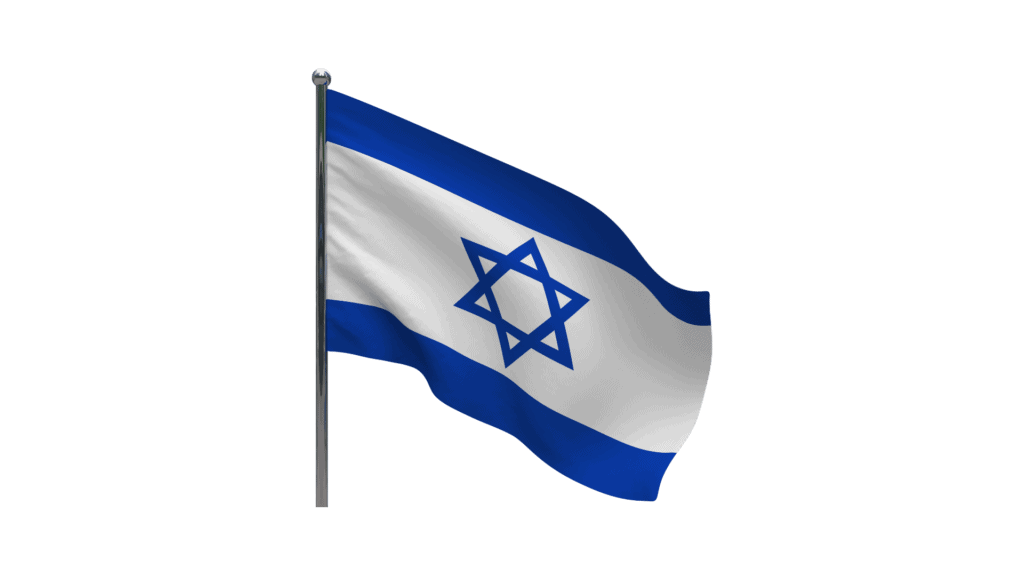
One of the most classic symbols of Judaism is the Israeli flag, which was introduced several months after the founding of the State of Israel in 1948. After some debate by the new country’s leaders, they decided that the Jewish people already had a “flag” of their own origins: the blue stripes on the white background represent the stripes of a tallit, or prayer shawl, and the Star of David in the middle signifies the Jewish people. Many people consider blue and white to be the traditional colors of Judaism.
Grogger
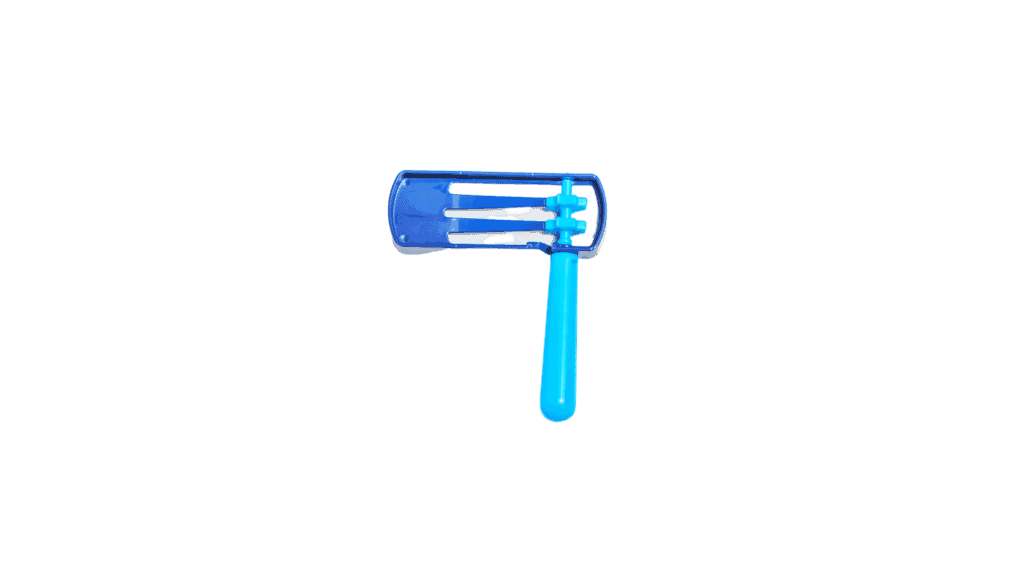
This is a ratcheting noisemaker used during the holiday of Purim, when Jews gather to hear the story of how we were saved from an evildoer named Haman who sought to destroy the Jewish people. It is a mitzvah, or commandment, to listen to the Purim story which is the basis of the Megillah, or Book of Esther. When Haman’s name is read aloud, the entire congregation bursts into cacophonous noise with loud boos and the sounds of groggers spinning. Children and adults alike enjoy the metallic, grinding noise of the grogger.
10 Commandments
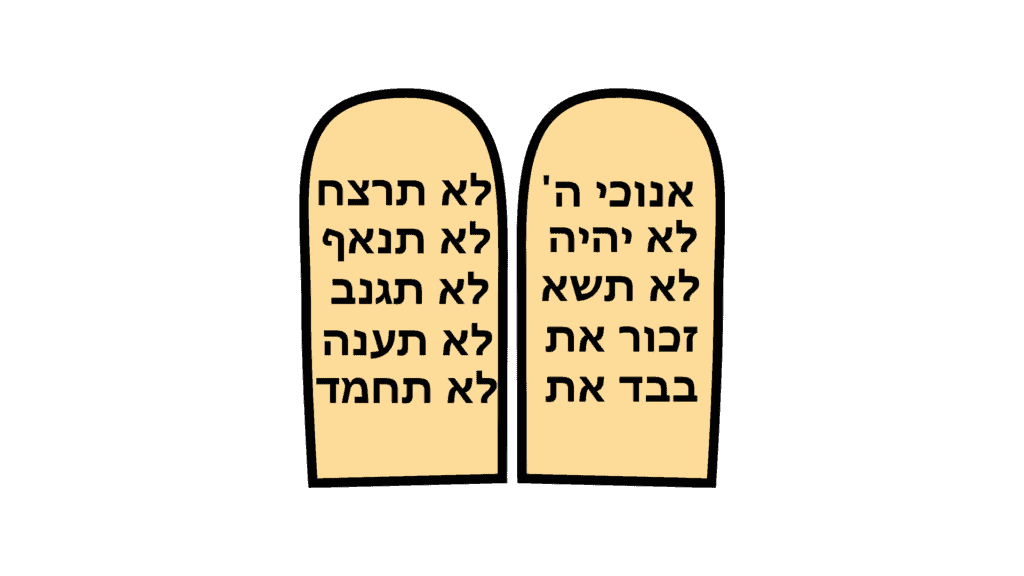
Jewish law is based on the 10 Commandments, given to Moses by G-d at Mount Sinai after the Exodus by the Jews from Egypt. The commandments are typically pictured as large, carved stone tablets in popular culture.The 10 commandments deal with human relationships to G-d and to humanity. The fifth commandment, that of honoring one’s parents, forms a sort of bridge between the two.The holiday of Shavuot, which occurs in Spring, honors the giving of the 10 commandments to the Jewish people.
Hamsa
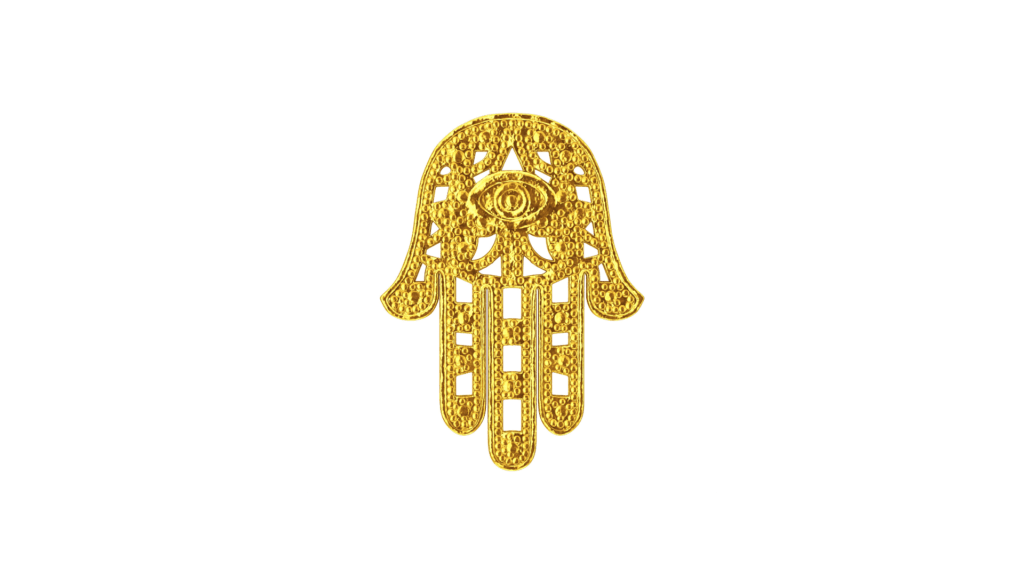
The hamsa is a palm-shaped symbol used by Jews and other religions as a protective amulet to ward off the “evil eye.” Some Jews consider the upside down hand to represent the hand of G-d. The hamsa symbol has become a fashion statement outside of its religious significance and can be found on everything from earrings to sweatshirts to pajamas.
Lulav and Etrog

During the Jewish holiday of Sukkot, Jews tie together the four species or plants mentioned in the Torah to form a lulav, which is waved in many directions to signify the unity of the Jewish people and that G-d is everywhere. The four species are the palm, the willow, the myrtle and a small fruit called an etrog. Similar in appearance to a lemon, the etrog is held in one’s hand while shaking the lulav. Etrogs are treated with great care and are usually sold in velvet boxes to protect the stem and keep it kosher.
Star of David

Probably nothing says “Jewish” more than the six-pointed Star of David, also known as the Magen David in Hebrew. It is the central figure in the flag of the State of Israel where it appears as a blue star on a white background framed by blue stripes. Historians date the symbol back to the 1600s.The Jewish community of Prague is considered to be the first to use the Star of David as its official symbol before its popularity spread throughout Eastern Europe. In 1897, the earliest founders of the future state of Israel chose it as the symbol of Zionism at the First Zionist Congress.
Ketubah

The Ketubah is a Jewish marriage contract signed by the spouses in accordance with Jewish law. It is typically signed just before the wedding ceremony in the presence of witnesses and rabbis. More than just an official document, the Ketubah has become a way to express a couple’s personal story and dreams through artistry. Today’s Ketubah can be a stunning piece of artwork ranging from papercut work to watercolors to dazzling imagery, which are often used as a key focal point in the couple’s home.
Tree of Life
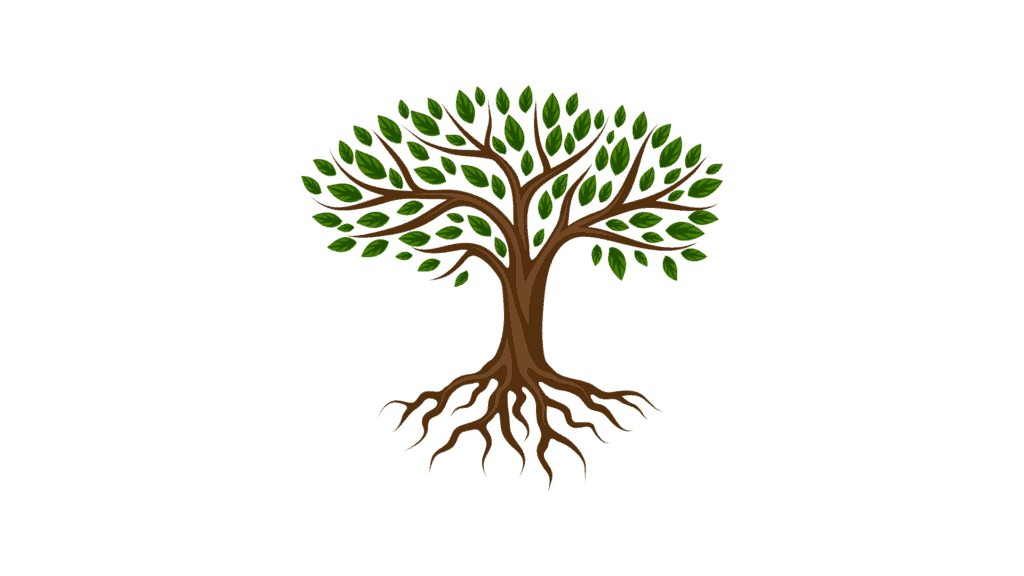
Known as Etz Chaim in Hebrew, the Tree of Life is a metaphor for the Torah in Judaism. Its meaning stems back to the biblical story of the Garden of Eden, which G-d filled with beautiful trees — including the tree of life and the tree of knowledge of good and evil. The image of a tree of life is frequently found in Jewish art and architecture, with many synagogues incorporating the theme of trees into their design. Many Jewish schools are named Etz Chaim.
Havdalah Set
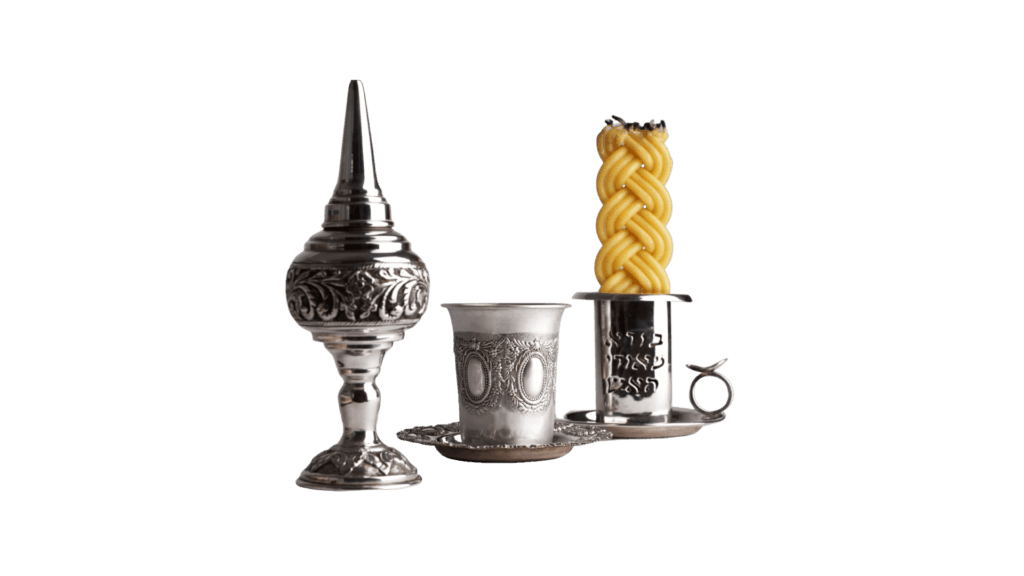
Shabbat is such an important weekly tradition that we can’t end the day of rest without acknowledgement. Cue Havdalah, the ritual ceremony in which we separate Shabbat from the rest of the week by reciting blessings over a cup of wine, sweet smelling spices, and a burning flame once we see three stars in the sky. Celebrating Havdalah requires a special set of ritual objects: a braided candle, spice box, Kiddush cup and often a tray to hold all these items. Blessings are usually sung while standing in a circle in the dark, as the spice box is passed around for all to smell the sweetness of Shabbat — in the form of cloves, cinnamon and cardamom. The candle is typically extinguished in the wine of the Kiddush cup, and Shabbat is over.
Read More: Beautiful Havdalah Sets to Use During the Saturday Night Ritual
Candlesticks

Candles are utilized in almost every Jewish ritual and holiday tradition. In fact, we welcome Shabbat every week with a blessing over candles. Traditionally, the female head of household lights the Shabbat candles and waves her hands around the flame three times in a circular motion while reciting the blessing. In more modern times, anyone can light and bless the candles. Most families use two candlesticks, recalling the two commandments surrounding the ritual of Shabbat. Jewish candlesticks can be beautiful silver heirlooms passed down through the generations, clay ones made by children in religious school or any type of candle holder that brings the beauty of Judaism to your family.
Seder Plate
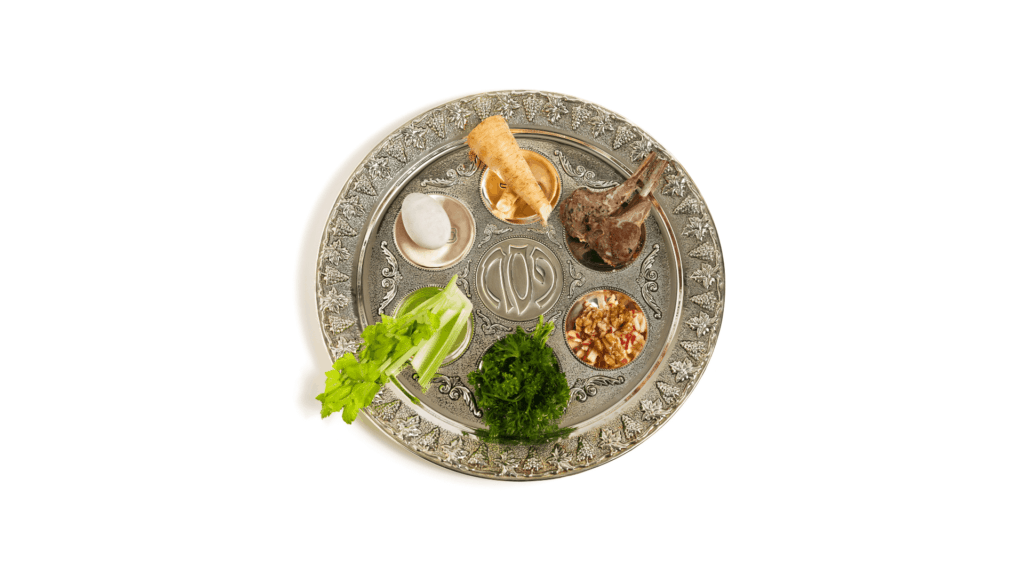
This item is probably the most famous ritual object of the Passover seder and is laden with historic and religious meaning. Most seder plates feature separate sections for each of the six ritual items required for a seder. (1) Parsley is dipped into salt water to remind of the slave’s tears. (2) Charoset, a mixture of nuts and apples, represents the mortar that the Israelite slaves used to lay bricks. (3) Bitter herbs such as horseradish remind us of the bitterness of slavery. (4) Lettuce or greens also represent the bitterness of slavery. (5) The shank bone symbolizes the sacrifice that the Israelites made in biblical times. (6) A roasted egg represents the cycle of life and renewal. Many families with large Passover celebrations have more than one seder plate on the table so that all may enjoy its meaning.
Are there any other Jewish symbols you would like to learn more about? Let us know in the comments below! And don’t forget to check out these other posts on the BMA blog:
Common Jewish Greetings and Phrases: When to Say What!
B’not vs. B’nai Mitzvah & Bar vs. Bat Mitzvah: Which Is It?
An Incredibly Useful Hebrew Vowels Chart and Explanation

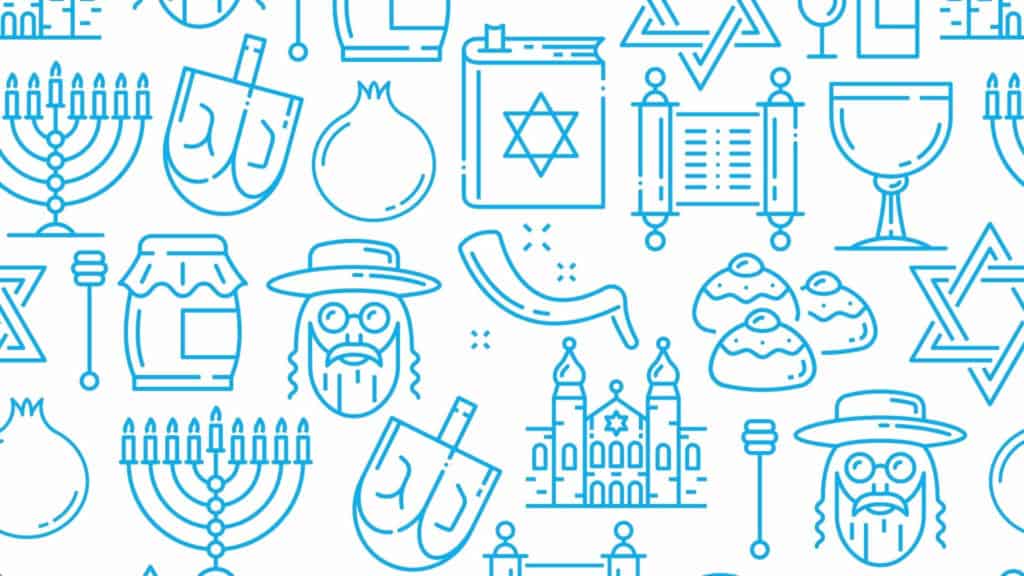
Thankyou for explaining these symbols and belongings of the Jewish Faith. I was only looking up what Mogen David meant and Wow you’ve explained so much which I have often wondered.
This came up in a book I am reading so Thankyou again.